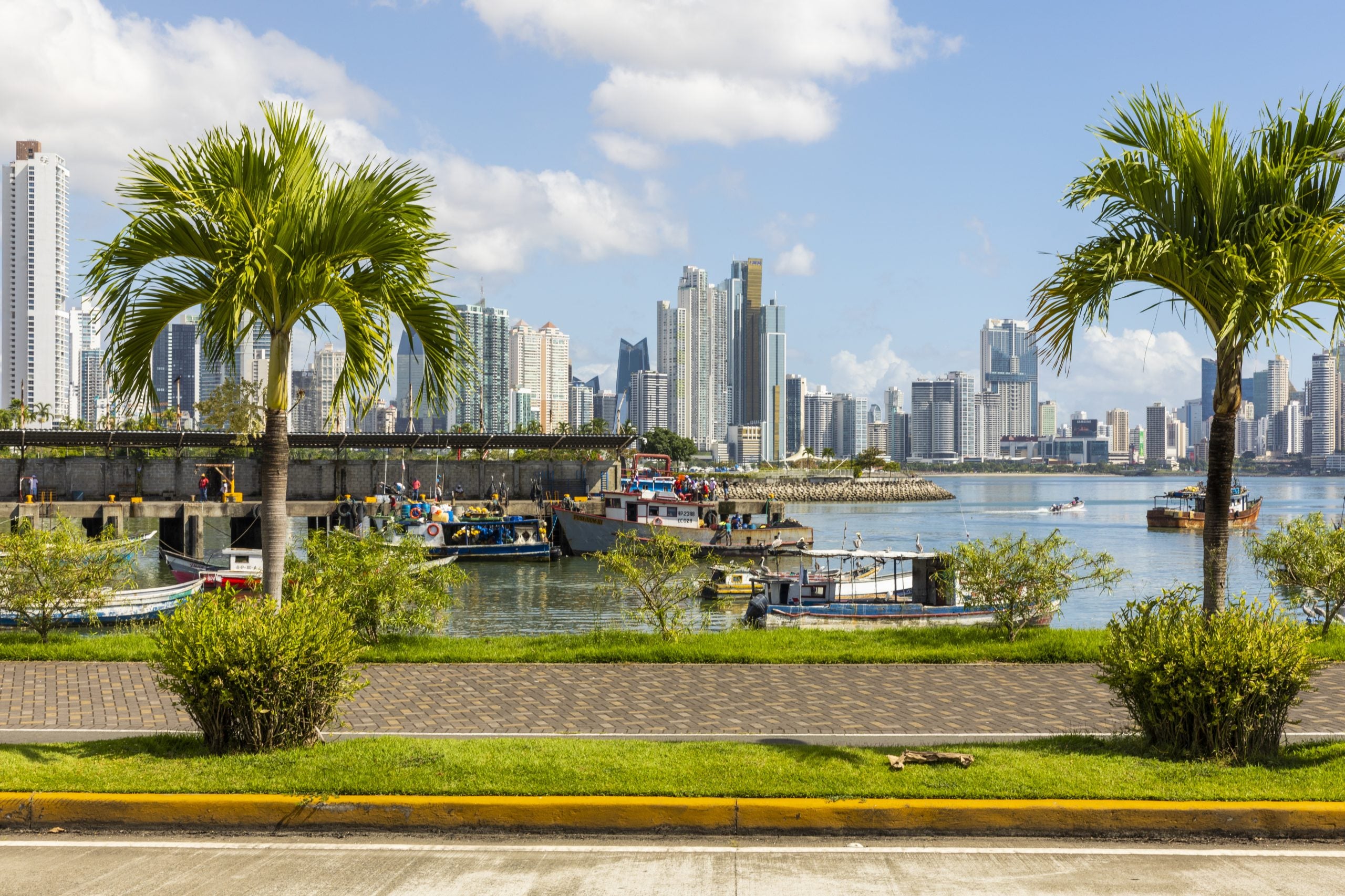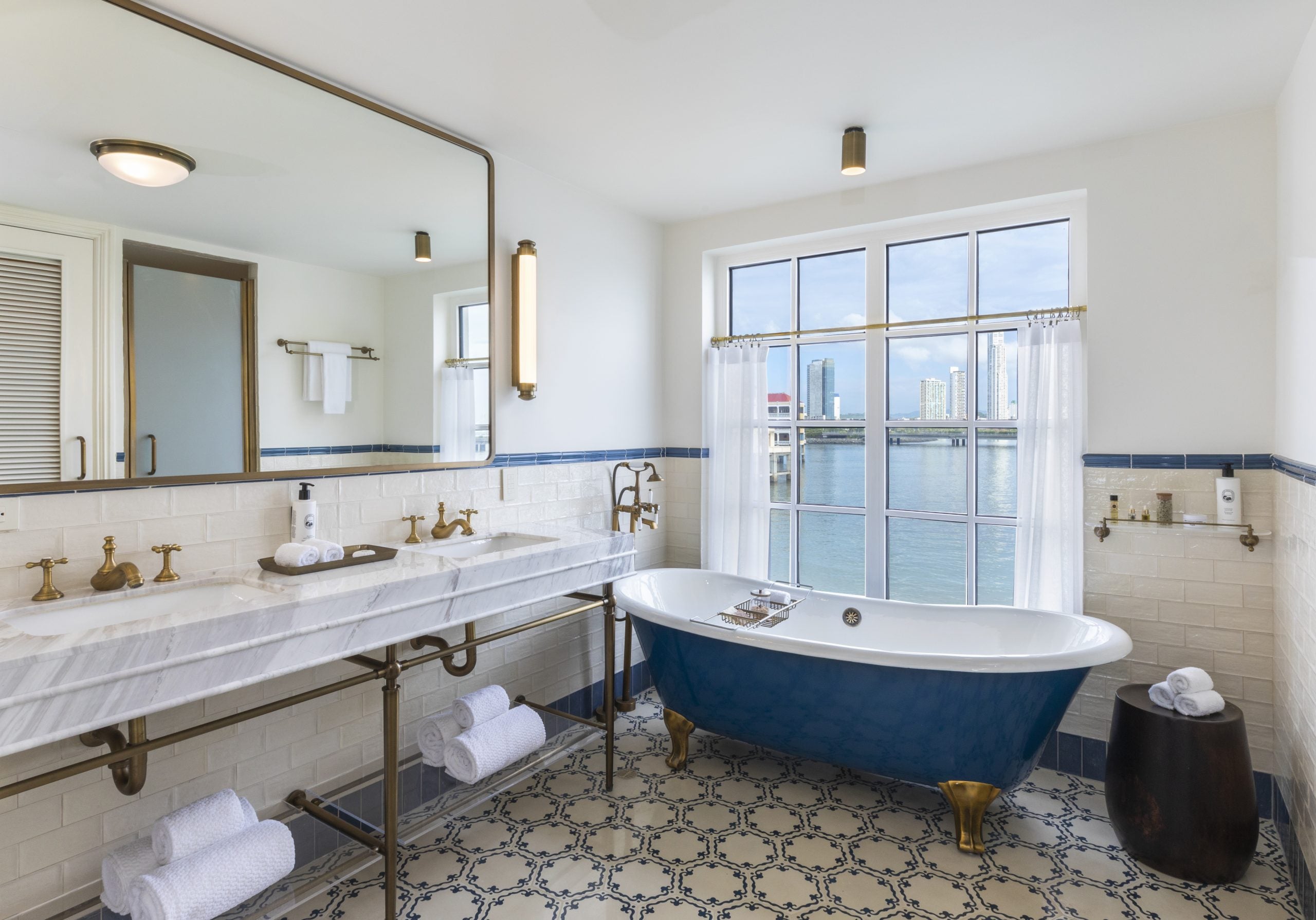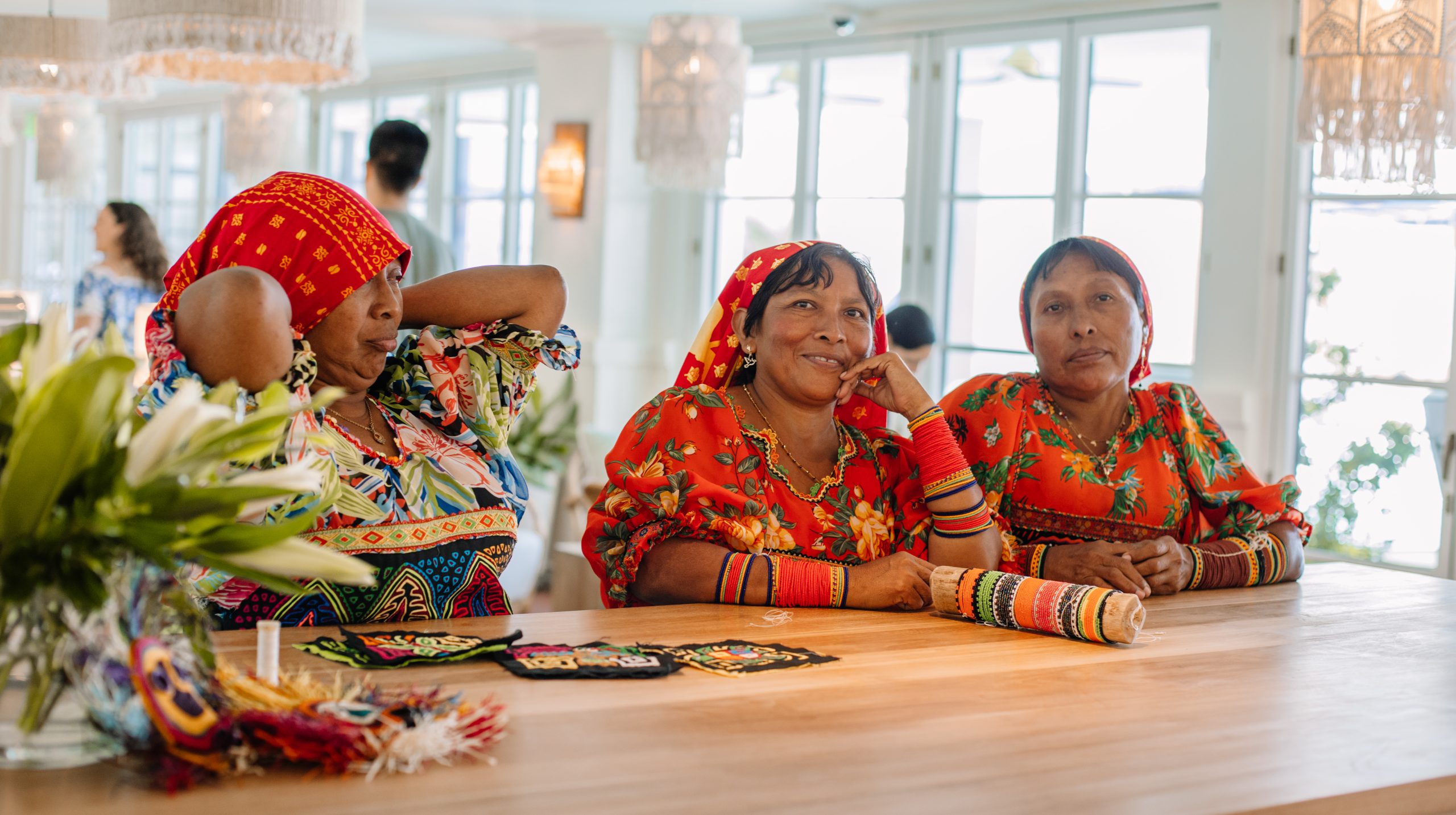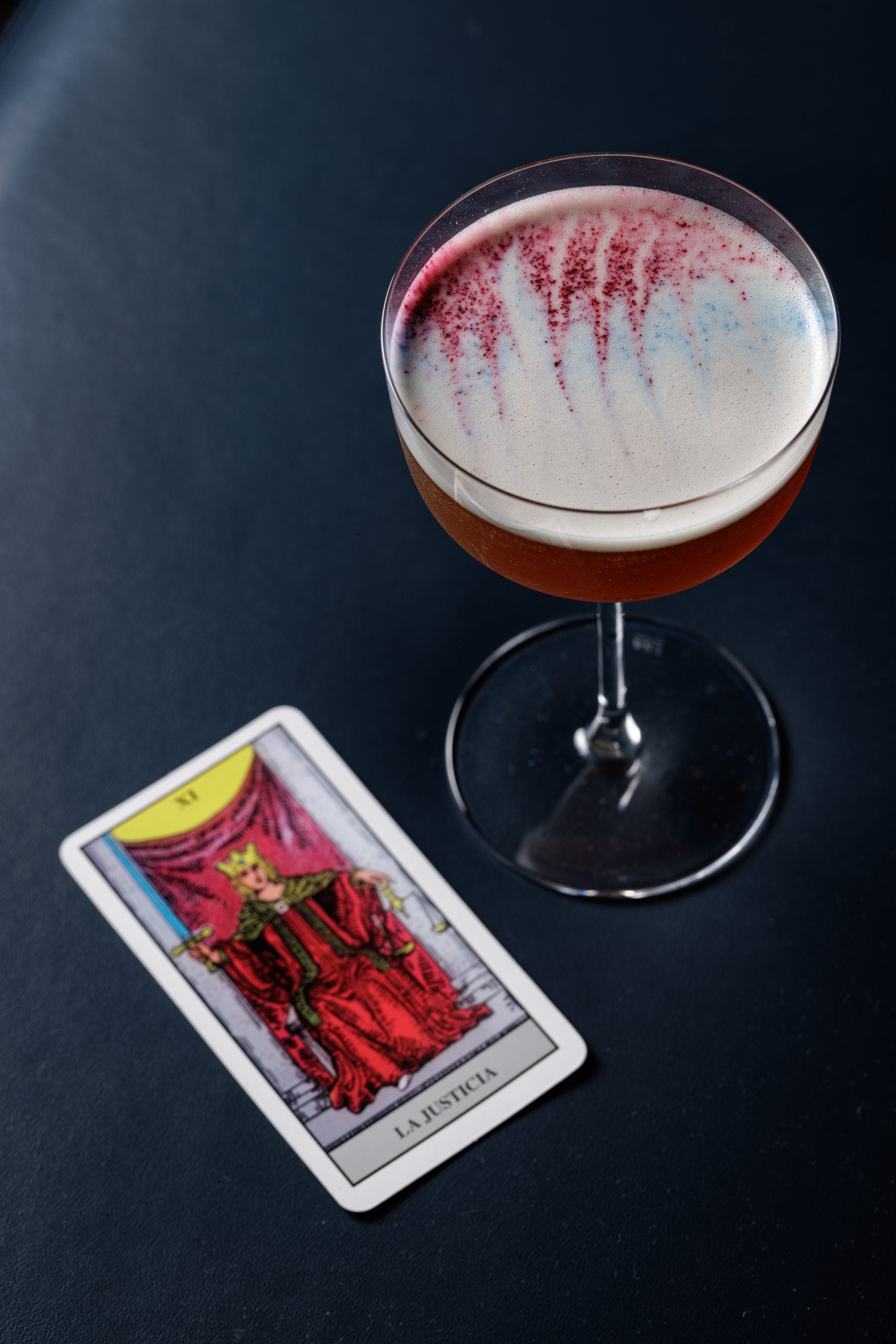
If you’ve never considered vacationing in Panama, the country’s geopolitical history might have something to do with that. After breaking away from Spain in 1821, Panama joined the republic of Gran Colombia, which it remained a part of until 1903. And with the United States formerly controlling the Latin American nation’s most notable technological and engineering wonder, the Panama Canal, you might have overlooked its unique individual identity as a travel destination.
Yet Panama is a country all on its own, spanning the southern tip of Central America to the northern part of South America. It encompasses various terrains, from mountains, hills, and volcanoes to jungles and waterways, as it finds itself bordered by the Caribbean Sea and the Pacific Ocean to its north and south, Costa Rica and Colombia to the west and east. With that location comes a variety of people, places, and things to explore, and an influence of diverse cultures that now make up Panama’s music, food, and dance scene, which I was lucky enough to experience up close and personal with a visit to its capital, Panama City, earlier this month. As one of the places where I’ve felt the safest while traveling, I’ve told friends to add Panama City to their travel list since my return. If you’re curious about doing the same, here’s what you should know.

How To Get There
Living in Los Angeles, it’s a trek to get almost anywhere, especially abroad, but Panama being just a mere six-hour direct flight away is one of its top pluses in my book. I flew business class on Copa Airlines, Panama’s official airline, which has flights from 16 destinations in the U.S., and between dinner and breakfast service on the overnight flight—and the ability to fully stretch out in my seat—my already brief flight felt even shorter.
One of the coolest things about Copa Airlines is its “Panama Stopover” program, which allows you to make a pit stop in Panama for anywhere from 24 hours to seven days without paying additional airfare to go to or return from your final destination. That leaves little excuse for you not to spend a day at least seeing what all the well-deserved hype is about.

Where To Stay
I’ve had the pleasure of staying at Sofitel properties in Mexico City, Cartagena, and Baru, and the only thing I love more than a Sofitel hotel is a Sofitel Legend because of its rich history, of which the Sofitel Legend Casco Viejo Panama has plenty. Located in the capital city’s historic district, narrow cobblestone streets lead you to the front of the gleaming white edifice, which was originally known as the Club Union, an exclusive social club for local businessmen and foreign ambassadors alike, as well as the location of many of the city’s most lavish balls and galas. The remnants of that time period can still be seen in the architecture and décor throughout the property, which was first built in 1917.
The pool is one of my favorite amenities at the Sofitel Legend Casco Viejo. Though small and intimate, it’s the largest among the hotels in the historic area and the only one overlooking the Pacific Ocean and the city’s skyline. The kitchen and bar directly behind it make it easy to eat and sip between dips in the water, and you might have the good fortune of coming across women from the Guna tribe making and selling decadent crafts there as you lounge. Their presence is a part of the hotel’s commitment to supporting the economic development of local communities.
The accommodations at the property are my next favorite aspect, particularly the Magnifique oceanfront room, with its French doors giving way to a charming iron balcony overlooking the water. An article could be written about the king bed alone, a signature Sofitel mattress, and box spring, but I was also quite fond of the sitting area, which I took advantage of during downtime between daily sightseeing and nighttime dinners. The marble bathroom, the element I’m most snobbish about when it comes to hotels, is stunning, from the brass hardware to the standalone blue tub, and as a chronic over-packer, having two full closets to store all the unnecessary clothes, shoes, and accessories I brought made settling in and feeling at home incredibly easy.

What To Do
Casco Walking Tour: A stay at the Sofitel Legend already places you in Casco Viejo, the old city, which retains many original structures, including several notable cathedrals and monuments. A guided stroll through the area will take you to La Calle De Los Sombreros, where you’ll learn about the history and the many varieties of the famous Panama hat, introduced to the world by former U.S. president Theodore Roosevelt. You’ll also find street vendors selling arts and crafts along General Esteban Huertas Plaza.
Cultural Immersion Experience: One of the more meaningful moments of my trip came from a visit with the Embera Tribe, one of the seven indigenous groups of Panama, including the Guna referenced above. A 25-minute canoe ride along the Chagres River, which gives way to Lake Gatún, will bring you to the small remote community made up of 17 families where the Embera welcome visitors to their land daily to eat, dance, and spend time learning their history and customs. While talking with one of the tribe’s members, I asked his true feelings about inviting outsiders into their community. He shared with me that their survival depends on tourism, as the money spent on booking the experience and buying crafts there allows them to purchase supplies that they need, which puts any concerns I had about potential invasion and exploitation at ease while communicating with them.
The Panama Canal: Designated one of the seven wonders of the modern world, no trip to Panama would be complete without a visit to the site that birthed travel between the country and the U.S. The Panama Canal is a manmade waterway that connects the Pacific Ocean to the Caribbean Sea and is considered an engineering marvel for its mechanical systems, which raise and lower water to varying levels to allow ships to pass, all of which you can see up close with ticketed admission. You can also book a designated tour to learn more about the history of the canal and the 10 years it took to create it.
Sofitel Spa: A spa visit will be necessary after a tour or two in Panama, and you can book one right at the Sofitel Legend Casco Viejo. The Herbal Bliss Massage there was much more than a light rubbing on of oils. For the first time ever, my therapist started me off lying on my back and submersed me in a sea of healing sensations, from the essences I inhaled to the pulsating vibrations placed on key points of my body to the heated packs keeping me warm, and the massaging pressure that was applied to fully remove the knots in my calves, neck, and shoulders, as requested. My only complaint was that 60 minutes wasn’t nearly long enough for the service, which truly lived up to its name.
Arcano: As a lover of mysteries, I was thrilled to find out there’s a secret club inside of the Sofitel, the location of which I have been sworn to secrecy. I don’t know what’s required to find out the secret passcode for entry. Still, I’d ask about it immediately upon check-in, lest you miss the opportunity to sip deliciously crafted cocktails paired with tarot cards you can pick at random or choose based on their meaning and the accompanying drink’s ingredients. This only adds to the mystique of the low-lit lounge, whose interior transports you back to the speakeasies of the prohibition era. If, by some chance, you can’t get in, the drinks at Mayda Lobby Bar are equally tasty.

Where To Eat
Cantina del Tigre: When people see you’re in Panama and start DMing you to make sure you eat at Cantina del Tigre, one’s expectations get set pretty high – not to mention its ranking at no. 25 on the 2023 list of Latin America’s 50 Best Restaurants. Long story short: Cantina delivers. The flavors of the sandwich de Carnaval were so incredibly savory, and I’m still thinking about the arroz con coco three weeks later. The variety of dishes also makes this a great spot for all types of diners, whether you favor red meat, seafood, or vegetarian options.
Ammi Skybar: If light bites and Latin music are the vibe you’re going for, take an elevator ride to the rooftop of the Sofitel where you can dine on finger foods without missing a beat as you dance. The Matcha IPA Honey cocktail and calamari have my stamp of approval.
Caleta: Michelin-starred Executive Chef Lorenzo Di Gravio directs the menu at Caleta, which has a gorgeous antique dining room and a private upstairs area for more intimate dinner parties. After experiencing the latter, my advice would be to let the servers at this restaurant take over. You’re guaranteed to have an elevated pairing of unique dishes and complementary wines you won’t get anywhere else in Panama.
Vera Café: I don’t drink coffee and rarely get up in time to eat breakfast before starting my day, yet two mornings in a row, I found myself at Vera Café in the lobby of the Sofitel with a chicken empanada in one hand and an iced mocha latte in the other. Service is fast, the pastry and beverage selections are vast, and I apparently did a grave disservice by not trying the ginger coffee the other girls in my group raved about.
Though I can’t vouch for these restaurants personally, when I asked for other recommendations, three names came up consistently and I’ve now added them to my must-try list for my next visit: Maito and Fonda Lo Que Hay, both of which landed on the 2022 list of Latin America’s 50 Best Restaurants, as well as Intimo.
I love traveling throughout Latin America, and when I thought about what makes Panama stand out over other countries I’ve visited, two things came to mind: The people and the sense of safety, both of which are particularly important for Black women when traveling abroad. There’s an easygoing, welcoming spirit about Panamanians, which I believe is rooted in the Caribbean influence, which you’ll often hear in the various Spanish accents and dialects spoken. I could walk around freely without being haggled for money or looked at with that glare of American foreigner recognition that can often overshadow one’s travel experience and make you feel uncomfortable exploring. Connecting with Indigenous people and learning about their lifestyles as opposed to simply indulging in the commercial activities that usually draw one to a location made my visit to Panama unlike any other and a trip I’d encourage everyone to make.